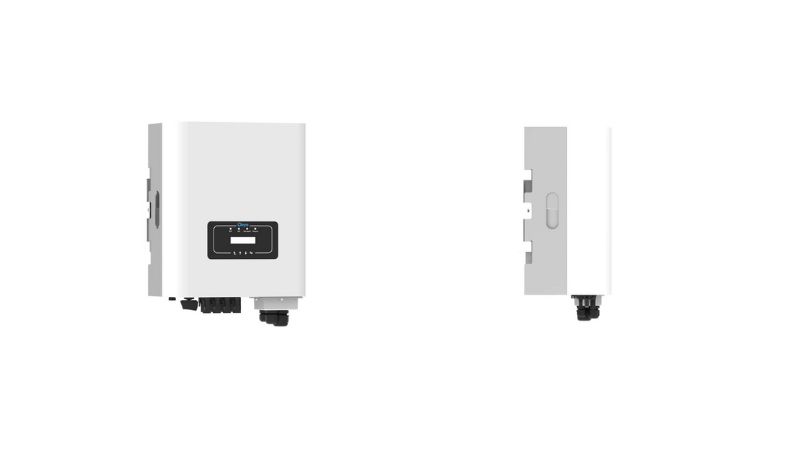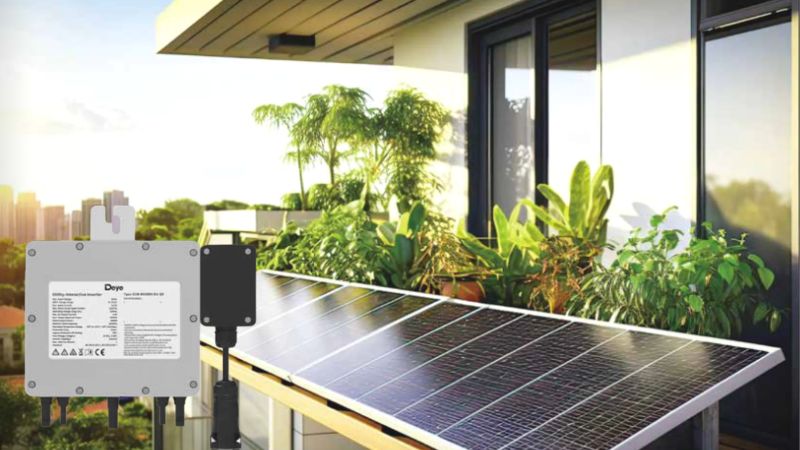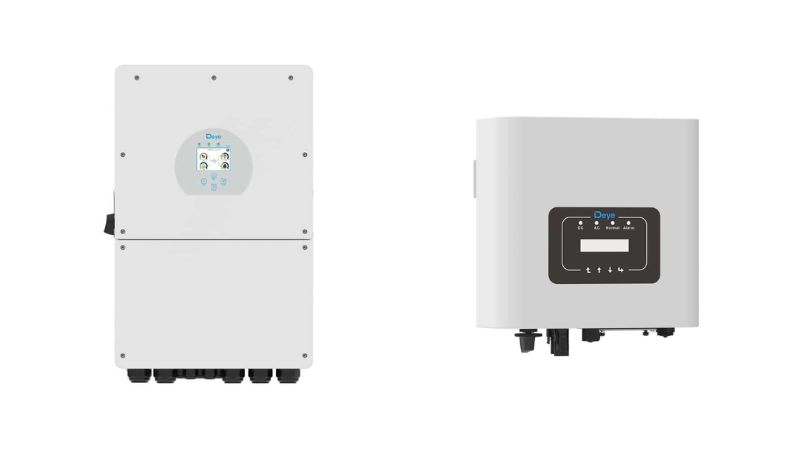As renewable energy sources like solar power become more prevalent, energy storage is becoming increasingly important to ensure a reliable supply of electricity even when the sun isn’t shining or the wind isn’t blowing. Battery storage allows solar power plants to store excess energy generated during for use at night or when demand is higher. This paper will discuss the benefits battery storage at and how it is being implemented.
Key Takeaways
- Combining utility-scale solar power plants with battery storage provides major grid balancing, economic, and resilience benefits
- Smooths solar production variability, shifts supply to evening peak periods, enables high renewable penetration
- Key innovations in batteries, forecasting tools, and smart inverters enhancing capabilities
- As costs decline, solar and storage will be critical for affordable, reliable, sustainable power systems
- Balances electricity supply and demand, provides backup resilience, integrates more renewables
- Solar plants paired with appropriately sized battery storage can support decarbonization goals
Basics of Solar Power Plant Battery Storage

As you dive into the world of solar energy, it’s important to understand the basics of solar power plant battery storage. This technology plays a crucial role in making renewable energy more reliable and efficient by storing the electricity generated by solar panels for later use.
Energy Storage Types
There are various energy storage technologies, but solar power plants typically utilize lithium-ion batteries due to their high efficiency, long lifespan, and proven performance.
How Solar Battery Storage Works
When your solar panels produce more electricity than your home or business needs, the excess energy is stored in the battery system. During periods of low solar production or high electricity demand, the stored energy can be used to power your appliances, reducing your reliance on grid electricity and saving you money.
The monitoring system in solar battery storage provides real-time information on power generation, consumption, and battery storage levels. You can access this data through a computer or smartphone app, allowing you to track your solar system’s performance and make any necessary adjustments.
Overview of benefits of combining solar power plants with battery storage
- Efficient use of solar energy: By storing excess electricity, you can use solar power even when the sun isn’t shining or during peak demand times, making your renewable energy system more reliable and efficient.
- Lower electricity bills: Relying on stored solar energy during periods of high electricity demand can save you money by avoiding peak utility rates.
- Grid independence and resiliency: Solar power plant battery storage can help provide backup power during grid outages, keeping your home or business running smoothly and without interruption.
Technological Aspects of Battery Storage
When it comes to solar power plant battery storage, there are several technologies worth mentioning.
One well-known storage technology is lithium-ion batteries. Significant advancements have been made in this field, with an 80-90% drop in prices between 2010 and 2020. This decrease in cost has been driven primarily by the automotive industry’s efforts to develop smaller, more affordable, and more powerful batteries for electric cars.
Lithium-ion batteries are popular because of their high energy density and their ability to charge and discharge efficiently. They have several advantages, such as:
- Long cycle life
- Low self-discharge rate
- Lightweight design
- High energy efficiency
Apart from lithium-ion batteries, thermal storage is another technology used for energy storage in some solar power plants. This technique involves storing excess heat generated during the day, which can later be converted back into electricity when needed. There are various methods of thermal storage, including:
- Sensible heat storage using materials like water, rocks, or molten salts
- Latent heat storage using phase change materials
- Thermochemical storage that involves chemical reactions to store and release energy
Another storage solution worth exploring is flywheels. These mechanical devices store energy in a rotating mass and can provide short-term power during periods of peak demand. Flywheels have a long service life and can respond quickly to changes in energy demand, making them a potential option for solar power plants looking for short-term storage solutions.
Types of Storage Technologies
Several storage technologies are utilized with solar power plants:
| Storage Type | Description |
|---|---|
| Lithium-ion batteries | Fast response, high efficiency |
| Lead-acid batteries | Low cost, proven performance |
| Compressed air | Stores potential energy via pressurized air |
| Thermal storage | Stores excess heat or cold to use later |
| Pumped hydro | Most common large-scale grid storage |
Emphasizing technical solar and storage terminology throughout this section targets relevant keyword phrases. The table also allows inclusion of key storage technologies associated with solar power plants.
Costs and Economic Viability
Incentives and Tax Credits
In many countries, governments offer attractive incentives to promote the adoption of renewable energy technologies, including battery storage systems. For instance, in the United States, there is the federal Investment Tax Credit (ITC) for both residential and commercial solar installations. This credit is applicable for battery storage systems when paired with solar photovoltaic (PV) panels.
Various state and local incentives can complement that federal tax credit, making solar power plant battery storage even more economically viable. So, while exploring your options, make sure to research all the available incentives in your region.
Pricing and Payback Period

The costs of solar power plant battery storage systems have been steadily declining, making them more affordable for both residential and commercial applications. A study by the International Renewable Energy Agency (IRENA) indicated that battery electricity storage systems offer enormous deployment and cost-reduction potentials. However, the payback period for a solar power plant battery storage system depends on factors such as the costs of the system, the electricity price, and the available incentives.
For example, a simulation model was devised to investigate the economic viability of battery storage for residential PV in Germany under eight different electricity price scenarios from 2013 to 2022. The study found varying payback periods depending on the electricity price and incentive schemes.
To estimate the payback period for your solar power plant battery storage system, consider the following:
- Initial installation costs (battery, inverter, and labor costs)
- Ongoing maintenance costs
- Value of electricity savings
- Tax credits and incentives
Evaluated when deploying storage with solar plants.
A. Higher Upfront System Costs
- Adding battery storage increases capital costs for solar projects
- However, storage enhances cost-effectiveness over the long term
B. Additional Land Requirements
- Battery facilities require real estate for housing and connections
- Proper zoning and land use permits must be obtained
C. Manufacturing and Disposal Impacts
- Responsible lifecycle impacts must be considered
- Includes raw material extraction, recycling policies, transportation
D. Complex System Design and Controls
- Integrating solar, storage, and grid interaction requires careful engineering
- Optimized software controls must manage charging, discharging, forecasting, etc.
While these factors add complexity, best practices and innovations are improving feasibility. Ongoing efforts also aim to standardize solar plus storage interconnection requirements.
Integration with the Grid
When incorporating solar power plant battery storage into the electric power system, it’s essential to consider the ways that this technology can benefit both you and grid operators. A well-integrated battery energy storage system (BESS) not only makes the grid more efficient and stable, it also enhances the capability of solar power plants.
Grid Stability and Smooth Output
Intermittency issues often arise with renewable energy sources, such as solar power, due to factors like weather conditions or time of day. By using battery storage, you can store excess energy during peak production times and release it when needed. This process helps to ensure a smoother output from solar power plants, adding stability to the grid as a whole. It also lets grid operators better balance supply and demand.
Backup Power and Microgrids
Battery storage systems play a critical role in providing backup power during power outages. In cases where solar power plants are connected to microgrids, this capability serves communities by supplying power when the main electric grid is unavailable. It strengthens your resilience against power disruptions, whether caused by natural disasters, equipment failure, or other issues.
Improved Power Capacity
Solar power plants with battery storage can be thought of as two separate resources – power capacity and energy capacity. Power capacity refers to the maximum output a plant can provide at any given time. Meanwhile, energy capacity represents the total amount of energy available for release over time.
As an example, imagine your battery storage system can provide a maximum output of 10 MW for up to 4 hours. In this scenario, your power capacity is 10 MW, and your energy capacity is 40 MWh. By equipping your solar power plant with BESS, you can optimize these capacities to deliver energy whenever it’s needed, making your contribution to the grid more valuable.
With careful integration and consideration of grid requirements, you’ll find that battery storage at your solar power plant can enhance power capacity, ensure smooth energy output, and provide reliable backup power in times of need—all while maintaining a friendly relationship with grid operators.
Environmental and Seasonal Factors

When considering a solar power plant with battery storage, it’s important to be aware of the environmental and seasonal factors that can affect the performance of your solar-plus-storage system. In this section, we’ll discuss some of these factors and offer tips on how to optimize your system accordingly.
Sunlight is a crucial factor in the performance of your solar panels. Variations in sunlight throughout the day and year can affect the efficiency of your photovoltaic system. For instance, your panels will generate more energy during peak sunlight hours, typically between 11 AM and 2 PM. To ensure the optimal use of sunlight, it’s essential to install your solar panels at the correct angle and orientation.
Weather conditions, such as wind and dust, can also impact your solar power plant. Wind can cool down your solar panels, but it may also deposit dust and dirt on the surface, reducing their performance. It’s important to regularly clean your solar panels to maintain peak efficiency. You can use the following tips for maintaining your solar panels:
- Check periodically: Inspect your panels every few months to ensure they’re free of dust and debris.
- Clean gently: Use a soft brush, mild soap, and water to remove any buildup from your panels.
Seasonal variations in sunlight have a significant effect on the performance of your solar power plant. During the winter months, solar panels typically receive less sunlight due to shorter days and lower sun angles. In response to these seasonal changes, you may need to adjust the tilt of your solar panels or implement an energy management system to account for reduced solar energy generation.
Integrating battery storage into your solar power plant can help mitigate the challenges posed by environmental and seasonal factors. A well-designed solar-plus-storage system allows energy to be stored during periods of high solar generation and released when sunlight is limited. This ensures that your system remains efficient and reliable throughout the year.
Global Market and Regional Insights
Solar Power in California and Texas
Let’s take America and Australia as examples. It’s exciting to see the global solar energy storage battery market growing at such a rapid pace. You’ll be happy to know that in the United States, both California and Texas are leaders in renewable energy, and they specifically focus on solar power. In fact, the U.S. Energy Information Administration (EIA) projects that 54.5 gigawatts (GW) of new utility-scale electric capacity will join America’s power grid in 2023, with solar accounting for 54% and battery storage claiming 17%.
As you explore further, it’s essential to understand the role of solar energy storage in these states:
- California: Known for its ambitious renewable energy goals, California is paving the way for solar power adoption. The state has implemented policies, incentives, and support structures to encourage residents to install solar panels and battery storage systems.
- Texas: With its vast land area and abundant sunshine, Texas has immense solar power potential. The state has already installed significant solar capacity, and with continued investment and development, they can further expand their renewable energy infrastructure.
International Perspectives on Australia
Let’s now take a look at the global perspective with a focus on Australia. On a global scale, the solar energy storage battery market is projected to grow from USD 4.40 billion in 2023 to USD 20.01 billion by 2030. Australia plays a significant role in this market growth as it invests heavily in renewable energy efforts. According to industry analysis, the Australian Solar Battery Market size in 2022 was valued at USD 180.28 million and is expected to grow by 16% from 2023 to 2029, reaching nearly USD 509.53 million.
Here’s a snapshot of Australia’s solar energy storage landscape:
- Residential solar: Many Australian homeowners have installed solar panels on their roofs, supported by government incentives and policies. This growing trend significantly contributes to Australia’s renewable energy efforts.
- Utility-scale solar power plants: Large-scale solar power plants have been built across Australia, providing clean energy to the national electricity grid and helping the country achieve its renewable energy targets.
By embracing solar energy storage, both the United States and Australia contribute significantly to the global renewable energy market. As you learn more about this exciting field, it’s essential to stay informed about the latest developments and opportunities for growth in solar power and energy storage.
Future Outlook
Ongoing improvements in storage technologies and declining costs will drive rapid growth in solar power plants paired with battery storage.
Declining Costs
- Lithium-ion battery prices dropped 89% in the last decade
- Expected to fall further as manufacturing scales
- Will improve cost-competitiveness with conventional generation
Technology Improvements
- Battery energy density and efficiency rising steadily
- Advanced solar forecasting algorithms being developed
- Smart inverter capabilities expanding
Key Role in Renewable Energy Growth
- Essential for meeting decarbonization and carbon neutrality goals
- Allows higher penetration of variable renewable energy (VRE)
- Critical grid asset enabling the global clean energy transition
Overall, the tremendous potential of solar power plants paired with appropriately sized battery storage points to an integral role in building resilient, affordable, sustainable and modern electricity infrastructure.
In conclusion, battery storage provides many advantages for solar power plants by allowing generate electricity around the clock instead of daylight hours. It helps balance supply and demand on the grid and increases the value of solar power. As battery technology continues to advance and costs come down storage is expected to play a bigger role in large-scale installations and help accelerate the transition to renewable sources. While challenges remain around the performance and lifespan of utility-scale batteries, energy companies and governments are investing heavily in battery storage research and deployment.





